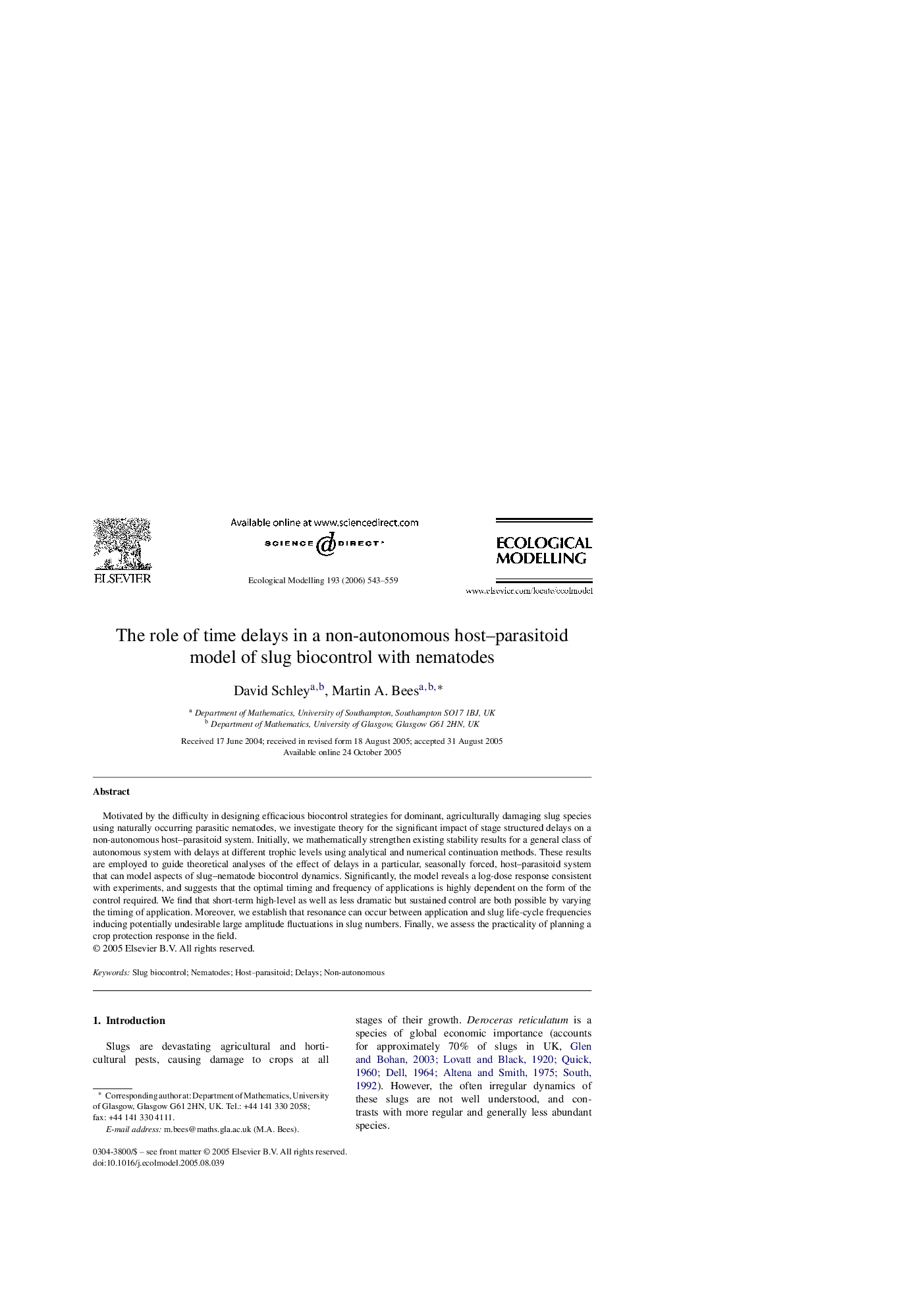| Article ID | Journal | Published Year | Pages | File Type |
|---|---|---|---|---|
| 4379257 | Ecological Modelling | 2006 | 17 Pages |
Motivated by the difficulty in designing efficacious biocontrol strategies for dominant, agriculturally damaging slug species using naturally occurring parasitic nematodes, we investigate theory for the significant impact of stage structured delays on a non-autonomous host–parasitoid system. Initially, we mathematically strengthen existing stability results for a general class of autonomous system with delays at different trophic levels using analytical and numerical continuation methods. These results are employed to guide theoretical analyses of the effect of delays in a particular, seasonally forced, host–parasitoid system that can model aspects of slug–nematode biocontrol dynamics. Significantly, the model reveals a log-dose response consistent with experiments, and suggests that the optimal timing and frequency of applications is highly dependent on the form of the control required. We find that short-term high-level as well as less dramatic but sustained control are both possible by varying the timing of application. Moreover, we establish that resonance can occur between application and slug life-cycle frequencies inducing potentially undesirable large amplitude fluctuations in slug numbers. Finally, we assess the practicality of planning a crop protection response in the field.
